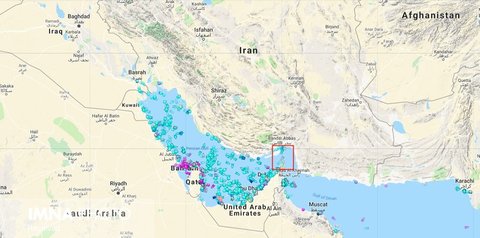Iran (IMNA) - The channel, which is only 21 miles wide at its narrowest point, links the Gulf of Oman and the Persian Gulf. If the Strait were to be closed because of the threat of ongoing attacks, it would be a massive blow to the world's economy. Passage through the strait is the only way to move oil from Persian Gulf producers to the world's oceans, and tensions in the area often affect oil prices.
The Strait is actually even narrower than its 21-mile width suggests. The shipping channels that can handle massive supertankers are only two miles wide heading in and out of the Gulf, forcing ships to pass through Iranian and Omani territorial waters.

About 22.5 million barrels of oil a day have passed through the Strait of Hormuz on average since the start of 2018, according to Vortexa, an energy analytics firm. That's roughly 24% of daily global oil production, and nearly 30% of oil moving over the world's oceans.
To put that in context, the amount of oil passing through the Strait of Hormuz is roughly double the entire oil production of the United States; even accounting for the recent boom in US output that resulted in it becoming the world's largest oil producer.
Source: CNN


Your Comment